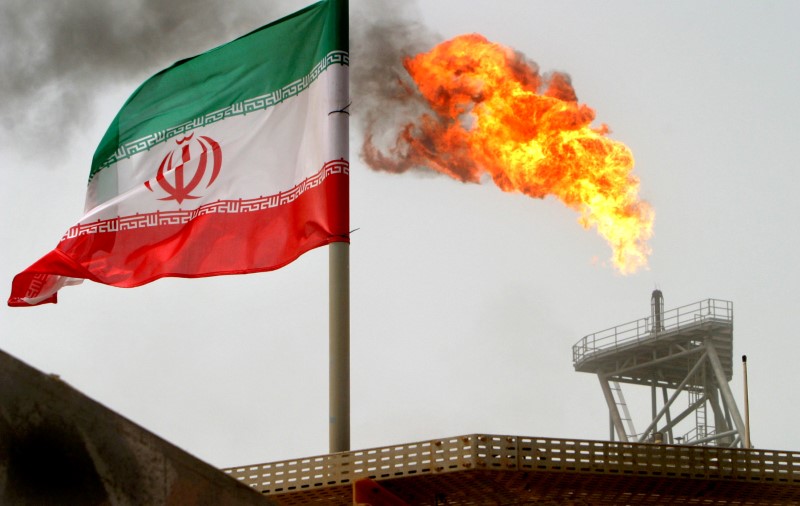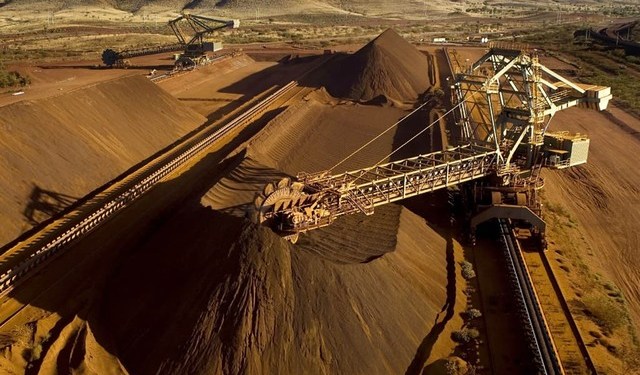 © Reuters. FILE PHOTO: A gas flare on an oil production platform in the Soroush oilfields in Iran
© Reuters. FILE PHOTO: A gas flare on an oil production platform in the Soroush oilfields in IranBy Alex Lawler
LONDON (Reuters) – OPEC delivered only a limited increase in oil production in September, a Reuters survey has found, as a cut in Iranian shipments due to U.S. sanctions offset higher output in Libya, Saudi Arabia and Angola.
The 15-member Organization of the Petroleum Exporting Countries pumped 32.85 million barrels per day in September, the survey on Monday found, up 90,000 bpd from August’s revised level and the highest this year.
But the 12 OPEC members bound by a supply-limiting agreement actually cut output by 70,000 bpd because of declines in Iran and Venezuela, boosting compliance with supply targets to 128 percent from a revised 122 percent in August, the survey found.
Oil prices have extended a rally this year on expectations the sanctions on Iran will test OPEC’s ability to replace the shortfall, despite the group agreeing in June to pump more after pressure from U.S. President Donald Trump. Oil () on Monday reached $83.32 a barrel, the highest since 2014.
“The supply situation looks fragile indeed, as any additional shortfall such as a deterioration of the situation in Venezuela would tighten oil supplies,” said Norbert Rücker at Julius Baer.
OPEC’s June agreement involved OPEC, Russia and other non-members returning to 100 percent compliance with oil output cuts that began in January 2017, after months of underproduction in Venezuela and elsewhere pushed adherence above 160 percent.
While Saudi Arabia has now almost fully reversed its pledged supply cut of 486,000 bpd, this has not fully offset losses in Iran and declining output in Venezuela and Angola.
LIBYA RECOVERY
The biggest increase last month came from Libya where production averaged above 1 million bpd, the survey found. Libyan output remains volatile due to unrest, raising questions about the stability of current OPEC output.
Angola, where natural declines at oilfields have been curbing production in recent years, boosted supply in September due to supply from a new field, Gindungo. Output is still far below its OPEC target.
Saudi Arabia, after opening the taps in June and then scaling back its plans to pump more, supplied 10.53 million bpd in September, up 50,000 bpd, the survey found. The recent figure was still lower than June’s 10.60 million bpd.
Supply in Nigeria, which like Libya is exempt from the OPEC supply cut pact because its output is often curbed by unplanned outages due to unrest and conflict, rose by 50,000 bpd.
Kuwait and the United Arab Emirates, after raising output in July following the OPEC deal, kept supply little changed in September, the survey found.
Among countries with lower output, the biggest drop of 100,000 bpd was in Iran. Exports fell as returning U.S. sanctions discouraged companies from buying the country’s oil.
Production also slipped further in Venezuela, where a lack of funds for the oil industry because of the economic crisis is cutting refinery operations and crude exports.
Iraq’s output edged lower as exports from the south of the country did not hold at record levels for the whole month. This still left Iraq as OPEC’s least compliant member in September, according to the survey.
Despite these decreases, OPEC output in September has risen to the highest since September 2017 according to Reuters surveys. This partly reflects the addition of Congo Republic to OPEC in June, not just increases by existing members.
Before Congo joined, OPEC had an implied production target for 2018 of 32.78 million bpd, based on cutbacks detailed in late 2016 and Nigeria and Libya’s expectations of 2018 output.
According to the survey, OPEC excluding Congo pumped about 230,000 bpd below this implied target in September.
The survey aims to track supply to the market and is based on shipping data provided by external sources, Thomson Reuters flows data and information provided by sources at oil companies, OPEC and consulting firms.
Source: Investing.com




























